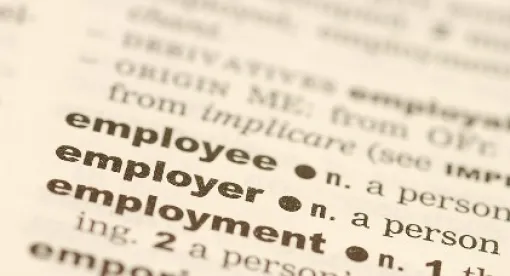As we noted last week, one of the more controversial Obama-Board rulings expanding joint employer liability was overruled this past week. In a widely-predicted 3-2 decision (Miscimarra, Kaplan, Emanuel), the NLRB, in Hy-Brand Industrial Contractors, Ltd., 365 NLRB No. 156 (Dec. 14, 2017), reinstated the traditional standard that had been followed for more than 30 years.
Under the reinstated standard, a joint employer finding will once again require proof that the alleged joint employer actually exercises direct and immediate control over the essential terms and conditions of employment of the employees in question. The ruling not only restores clarity on this important question, but also casts doubt upon the NLRB’s ability to argue, as it has in the much publicized McDonald’s litigation, that franchisors are joint employers with franchisees.
Let’s take a closer look at how the pendulum has swung on this issue through the years.
Traditional Joint Employer Standard
Beginning in 1984 and continuing until the NLRB’s 2015 Browning-Ferris decision, the NLRB and the courts determined whether two separate entities were joint employers by assessing whether each exerted such direct and significant control over the same employees that they could be said to “share or codetermine those matters governing the essential terms and conditions of employment. . .” The Board applied this analysis by evaluating whether an alleged joint employer “meaningfully affects matters relating to the employment relationship such as hiring, firing, discipline, supervision, and direction” and whether that entity’s control over such matters was direct and immediate. And it deliberately distinguished direct and immediate control from situations where the alleged joint employer’s supervision was limited and routine.
The Browning-Ferris Standard: Reserved, Potential or Indirect Control is Enough
In Browning-Ferris Industries of California, Inc., 362 NLRB No. 186 (2015), citing “changing economic circumstances, particularly the recent dramatic growth in contingent employment,” the NLRB significantly broadened the joint employer standard. The Board jettisoned the actual conduct of the parties and decided to base NLRB decisions not on what actually happened in the workplace but on hypothetical concepts; whether the alleged joint employer had the “potential” to control aspects of the workplace, either “directly or indirectly”, even though it never had exercised that authority.
That standard would have allowed the NLRB to impose joint employer liability after the fact based upon legal conclusions about the contractual relationships between the parties, as opposed to what actually happened in the workplace. Indeed, in Hy-Brand, the majority observed that the Board had done exactly that in CNN America, Inc., 361 NLRB 439 (2014), (which was overturned on appeal by the D.C. Circuit) where the Board “imposed after-the-fact joint employer obligations contrary to the parties’20-year bargaining history, applicable collective bargaining agreements, relevant services contracts and the Board’s own prior union certifications.”
At the time, this sweeping departure from precedent created potentially unforeseen liability under the Act, as well as bargaining obligations for entities that had never even attempted to control the workplace. The impact of this decision upended decades of bargaining history and parties’ relationships.
Actual Exercise of Direct and Immediate Control Is Now Needed
The Board restored the pre-Browning-Ferris paradigm that had existed for nearly 30 years. Now, joint employer liability is based upon the actual conduct of the parties, as opposed to hypothetical after the fact legal conclusions about retained but unexercised control.
The majority opinion in Hy-Brand, borrowing heavily from then-Member Miscimarra’s dissent in Browning-Ferris, is an extensive catalogue of the many reasons the Browning-Ferris standard was both practically unworkable and inconsistent with the common law and Congressional intent. The House of Representatives apparently shared that view by passing, earlier this year, H.R. 3441, the Save Local Business Act, which would reinstate the traditional joint employer test under both the NLRA and the FLSA. H.R. 3441 has not yet been voted on by the Senate, and in light of the Hy-Brand decision, it may not be a priority. The Hy-Brandruling should also moot the D.C. Circuit’s consideration of Browning-Ferris itself, which was argued in February 2017, but never decided.
Application of the Hy-Brand Standard
Interestingly, the Board concluded that the two employers in Hy–Brand were joint employers due to the exercise of actual control by both entities over employment conditions. The Board further held that they had unlawfully terminated employees who struck one of their businesses. This prompted the dissenters in Hy-Brand – Members Pearce and McFerran, both part of the Browning-Ferris majority – to argue that there was no need to overturn Browning-Ferris to reach the correct result in the case itself. The dissenters also claimed that the Board should have allowed public notice before changing the Browning-Ferris standard, citing to the fact that advance notice and extensive public briefing had been provided in Browning-Ferris in 2014. Neither those claims nor the argument that Browning-Ferris was correctly decided carried the day.
Impact on Pending Litigation and Commercial Relationships
Significantly, and unsurprisingly, given the way the Board has ruled in recent days, the Hy-Brand holding is retroactive, meaning it applies to all current and pending cases. The most highly publicized of these cases is the McDonald’s litigation, in which the General Counsel is arguing that McDonald’s is the joint employer of franchisee employees across the country. The trial in McDonald’s before an NLRB Administrative Law Judge has been ongoing since March 10, 2016. This ruling certainly calls into question the continuing vitality of that litigation, as well as the scores of additional unfair labor practice charges against franchisors and/or franchisees now siloed at the NLRB awaiting a McDonald’s ruling. Newly-appointed NLRB General Counsel, Peter Robb, will have to decide whether to pursue that litigation (and the many pending charges) under the traditional joint employer standard, or expend the agency’s resources in a different fashion. We will keep you posted on how this sea-change ruling impacts these cases.
For employers, return to the direct and immediate control standard is vitally important, as it provides much needed certainty in commercial contracting relationships. Businesses contracting for services can avoid joint employer liability by ensuring that they do not control the essential terms and conditions of employment of the employees in question. Hiring, firing, discipline, supervision and direction of employees should be left to the direct employer, as should decisions about compensation and benefits. The majority in Hy-Brand clarified that cost-plus contracts involve indirect control and are not in themselves proof of a joint employer relationship. While gray areas will always remain in these fact-based cases, precise contract drafting and care in observing the separate spheres of authority within the workplace should allow contracting entities to avoid claims of joint employment under the NLRA, as was the case prior to the 2015 Browning-Ferris decision.



 />i
/>i

